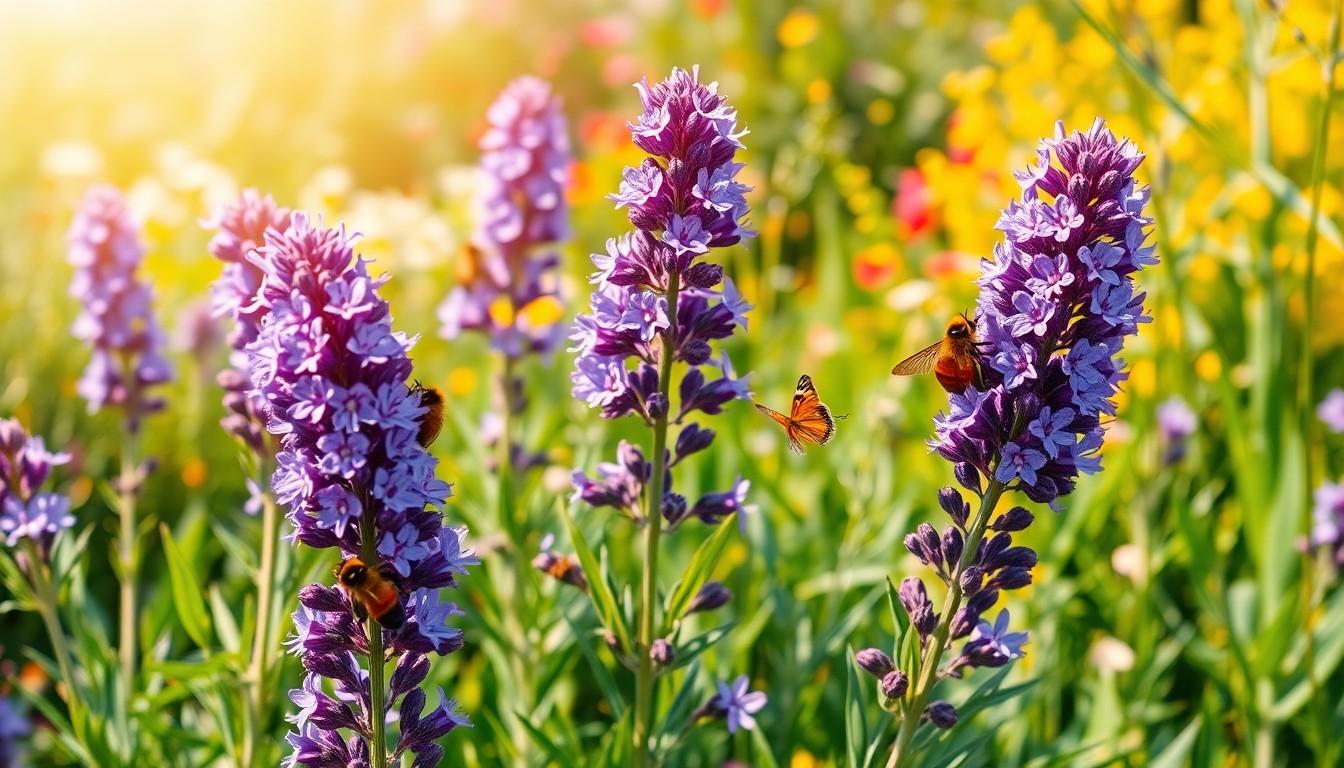The Best Fluffy Pancakes recipe you will fall in love with. Full of tips and tricks to help you make the best pancakes.

Texas Sage Landscaping Ideas: Transform Your Garden with Stunning Drought-Resistant Plants
Texas sage, with its vibrant purple blooms and aromatic foliage, isn’t just a pretty face in the landscaping world. This hardy plant thrives in the Lone Star State’s unique climate, making it a go-to choice for anyone looking to spice up their outdoor space. Imagine a garden that not only looks stunning but also requires minimal upkeep—sounds like a dream, right?
Overview Of Texas Sage
Texas sage, also known as Leucophyllum frutescens, thrives in arid environments and showcases vibrant purple flowers. This hardy shrub flourishes in various soil types, including sandy and limestone-based soils, contributing to its appeal for many homeowners. It exhibits excellent drought resistance, requiring minimal irrigation, making it suitable for xeriscaping.
Flowers bloom primarily in late spring and early summer, attracting pollinators like butterflies and bees, which enhances biodiversity in gardens. The plant can reach heights of up to 6 feet, offering a substantial presence in landscaping designs. Its evergreen leaves provide year-round interest, adding texture and color even when not in bloom.
Choosing Texas sage for landscaping promotes low-maintenance gardens and allows for effortless elegance. It performs best in full sun to partial shade, thriving in areas with well-draining soil. Pruning after flowering encourages fuller growth and a better shape, ensuring the plant remains aesthetically pleasing.
This shrub also pairs effectively with other native Texas plants, such as blackfoot daisy and red yucca, enhancing the overall landscape design. Incorporating Texas sage can create beautiful contrasts with its striking foliage and diverse flower colors. Its resilience in the face of the harsh Texas climate makes it an ideal choice for creating sustainable outdoor spaces.
Benefits Of Texas Sage In Landscaping

Texas sage offers multiple advantages that contribute to its popularity in landscaping. Gardeners appreciate its resilience and beauty, making it an ideal choice for various outdoor spaces.
Drought Resistance
Drought resistance defines Texas sage, allowing it to thrive in dry conditions. This plant efficiently utilizes water, making it perfect for arid areas. Texas sage can survive with minimal irrigation once established, reducing water usage significantly. Its ability to flourish in poor-quality soils enhances its appeal for xeriscaping projects. Landscapes incorporating Texas sage require less maintenance and fewer resources, ultimately leading to cost savings for homeowners.
Attracting Pollinators
Attracting pollinators is another significant benefit of Texas sage. This plant produces vibrant purple flowers, captivating butterflies and bees during blooming seasons. Pollinators play a crucial role in sustaining ecosystems, providing essential services for garden health. By incorporating Texas sage into landscaping, gardeners support local wildlife and biodiversity. Its blooming periods in late spring and early summer ensure an ongoing supply of nectar for these vital insects.
Creative Texas Sage Landscaping Ideas
Utilizing Texas sage in landscaping can lead to beautiful and sustainable outdoor spaces. Here are some creative ideas to incorporate this native plant into various designs.
Rock Gardens
Rock gardens offer an ideal setting for Texas sage. The plant thrives amongst boulders and gravel, complementing the natural aesthetics of the landscape. Utilizing varying sizes of rocks creates visual interest while maintaining soil drainage. Grouping Texas sage with succulents and ground covers further enhances the arrangement. These combinations generate harmony between textures and colors, promoting biodiversity and attracting pollinators.
Border Planting
Border planting elevates the visual appeal of pathways and garden beds. Placing Texas sage along the edges provides a striking contrast to more delicate plants. The height variation creates depth and draws attention to essential garden features. Alternating Texas sage with other native plants enriches the landscape while maintaining a cohesive look. This arrangement serves to define spaces, guiding visitors and enhancing outdoor admiration.
Xeriscaping Concepts
Integrating Texas sage into xeriscaping offers both aesthetic and water-saving benefits. The plant’s drought tolerance aligns well with low-water landscape principles. Designing beds with Texas sage, ornamental grasses, and native wildflowers promotes efficient water usage. Creating layers in groupings lends texture and visual interest while maximizing the benefits of xeriscaping. This efficient approach reduces maintenance time and contributes to ecological resilience.
Maintenance Tips For Texas Sage
Texas sage requires minimal maintenance, making it a favorite among gardeners. Proper care enhances its growth and vitality.
Watering Requirements
Watering Texas sage should occur infrequently. Once established, the plant thrives with minimal irrigation, typically requiring water every three to four weeks during dry spells. Overwatering can lead to root rot, so ensuring well-draining soil is crucial. Rainwater collection systems may also benefit this hardy plant, as it thrives in naturally dry conditions. Observing weather patterns helps determine additional watering needs, ensuring the plant stays healthy without excessive moisture.
Pruning Techniques
Pruning Texas sage boosts its health and appearance. Timing members of this plant for pruning after flowering optimizes growth. Shaping can also enhance its fullness, leading to a more robust structure. Removing dead or damaged branches promotes better air circulation. Additionally, light pruning during late winter prepares the plant for new growth in spring. Using clean, sharp tools is essential to avoid damage and encourage rapid healing. Regularly spent flowers can also enhance the overall aesthetic, keeping the plant looking fresh and vibrant.
Conclusion
Texas sage stands out as a top choice for anyone looking to create a stunning and sustainable landscape. Its vibrant blooms and fragrant foliage not only enhance visual appeal but also support local wildlife. By incorporating Texas sage into various designs like rock gardens or borders, gardeners can achieve a beautiful and low-maintenance outdoor space.
With its exceptional drought resistance and minimal care requirements, Texas sage offers both practicality and elegance. Whether it’s attracting pollinators or thriving in challenging conditions, this resilient plant is a valuable addition to any Texas landscape. Embracing Texas sage means embracing a more sustainable and vibrant garden.
